There’s a lot to love about Iceland in the winter. Covered in snow, one of the most beautiful places on the planet gets even more spectacular. And if you’re lucky enough to be treated to some decent weather, the northern lights can pop here any night. Whether its emo horses with their hair flickering in the wind, or a chilling waterfall drizzled in icicles, Iceland during the wintertime never stops blowing you away.
Speaking of blowing you away, there’s rarely a calm moment in Iceland. Winter here can be harsh. Roads can close for wind, ice, or snow at any moment. The weather is unpredictable year round, but in the winter it can simple be deadly. One doesn’t enter into Iceland as a photographer in winter without knowing that there are some challenges ahead. And one really shouldn’t come here unless they’re prepared for the conditions.
That being said, if the conditions work in your favour, you plan properly, and are endue the spurts of bad weather, there’s nowhere quite as special as Iceland in the winter.
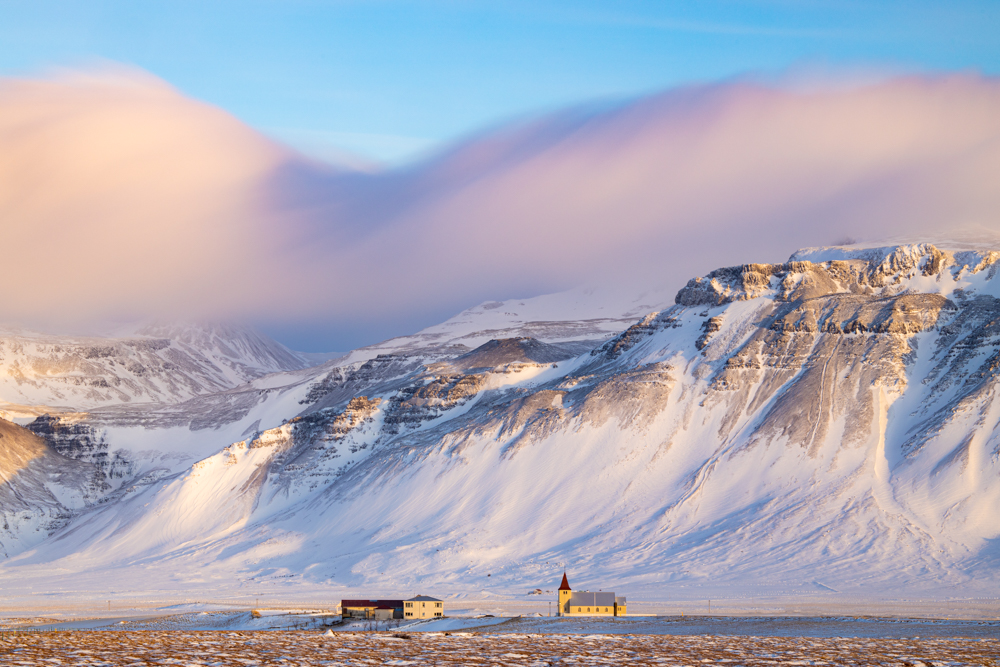
Best Winter Photo Locations in Iceland
Before you plan your photography tour to Iceland, you should note that there will be a number of locations closed. But, the reality is that you never really know what the conditions are going to be like until you go. I’ve been to Iceland in February and there was no snow except at altitude. And, I’ve been in February and basically all the waterfalls have been frozen.
You just need to go, and figure things out a bit on the fly.
The South
In a way, the south is both the safest winter location in Iceland and the one with the most risk. There are a lot of locations in the South, and due to the heavy tourism in the area it’s the best maintained. But, at the same time, the winds in the south can be intense – especially around Vik. Road closures happen here. In fact, on our most recent photo trip to Iceland we got stuck for 2 days near the Glacier Lagoon because of a wind storm.
Here are some of the locations worth photographing in the winter.
Vik Beach
There are 2 sides to Vik Beach. On the side closer to Vik you have calmer seas, and way fewer people. But, the sea stacks and seas are definitely more impressive on the west side.
Please note, though. People do die on Vik Beach because they’re not careful with the waves. There’s a type of wave here called “sneaker waves” and they can come out of nowhere. Please, don’t turn your back to the seas here, and don’t get too close to the ocean – even if it makes a better photo.
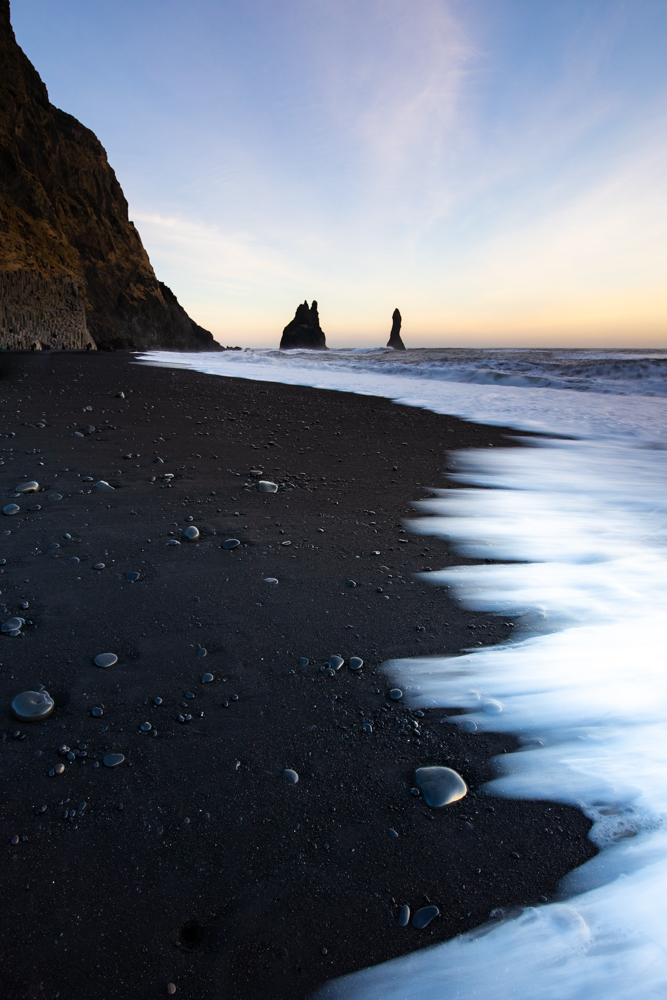
Glacier Lagoon and Diamond Beach
These locations are both in the same place.
Diamond beach is right along the coast, and though there are two parking lots the one to the west is generally better. It’s a busy spot, but because it’s so spread out it doesn’t really matter.
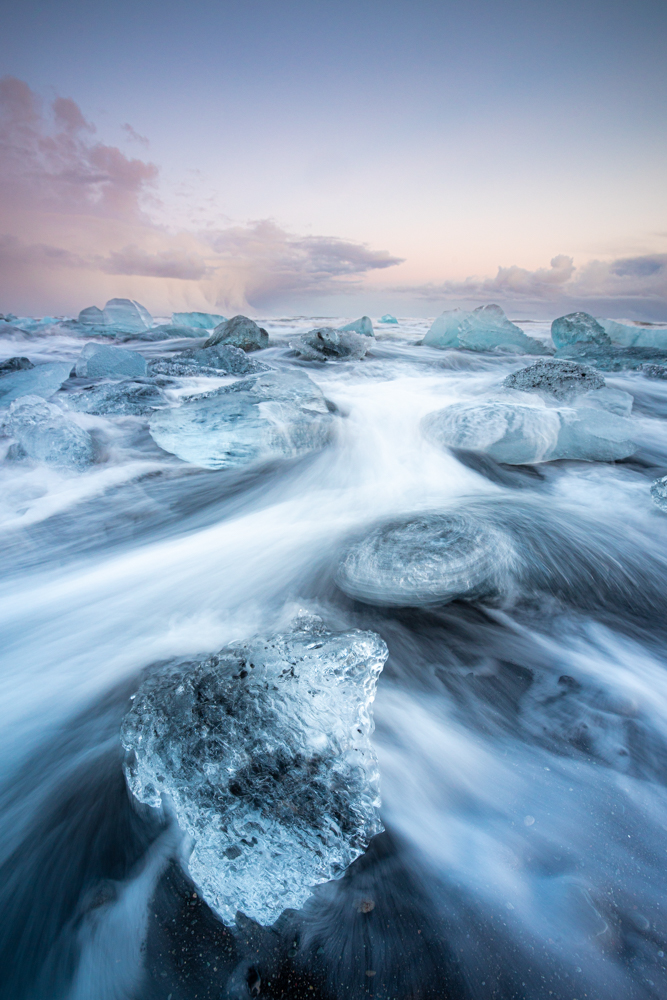
The glacier lagoon can be spectacular if the light is good. Sometimes the icebergs get clogged up in the passage out to sea and the lagoon gets too full of ice. But, when there is less ice in the lagoon there are some great photos to be made here.
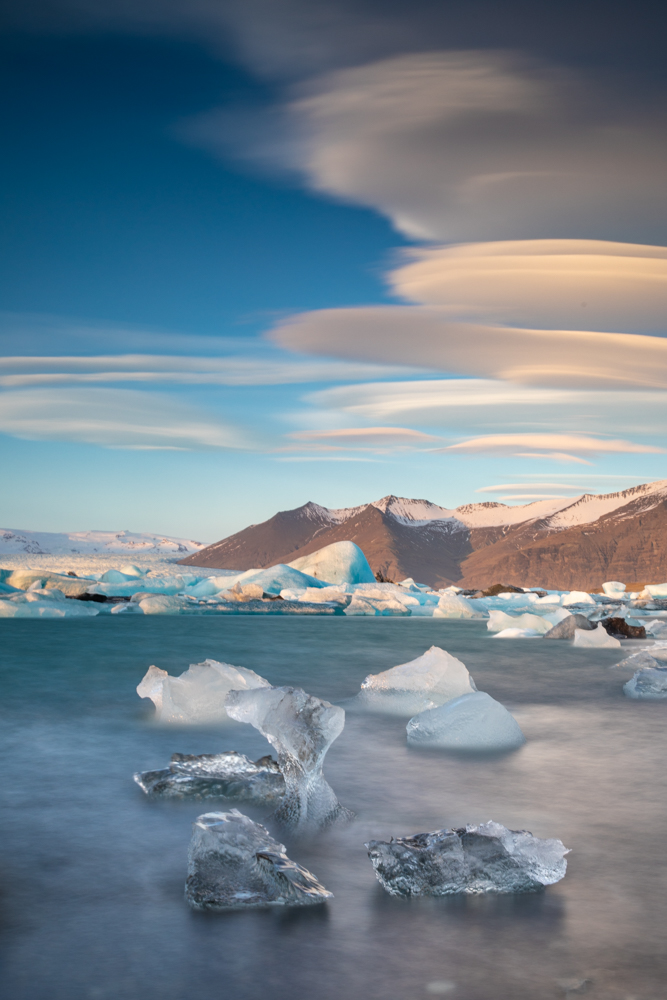
Seljalandsfoss
This is one of my favourite waterfall photo locations in Iceland. There are a number of photos to be made here. You can go around to the right and get the water fall with the view out to the flats, you can photograph the waterfall right down the river from the little wooden bridge, and you can climb up the stairs to the left of the falls for a more detailed image. All work in the right circumstances.
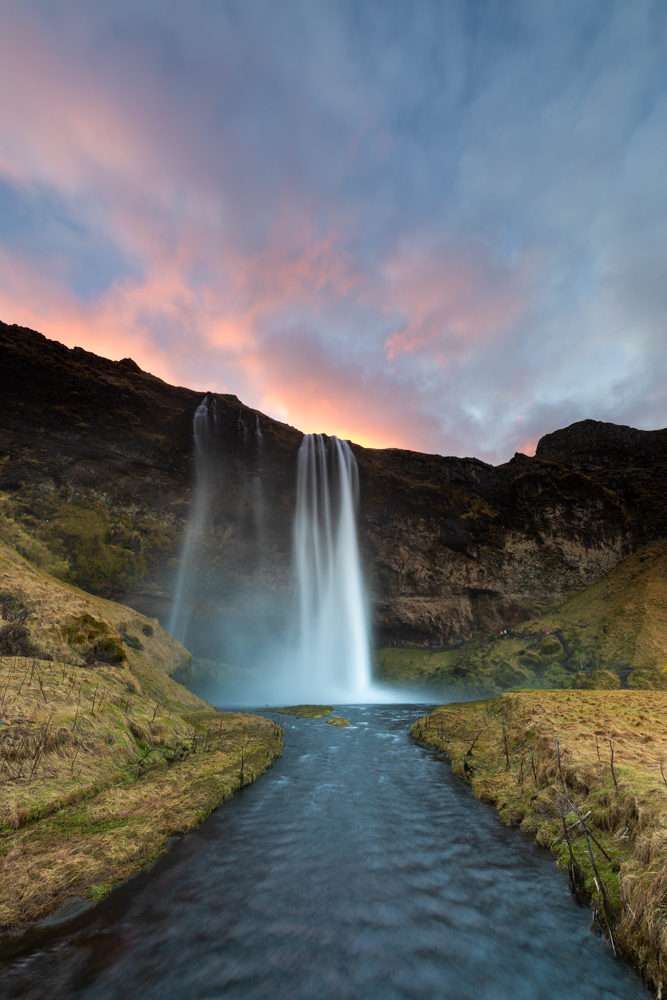
Skogafoss
As much as Skogafoss can make for a beautiful location, it’s also very busy. And the simple nature of it means that if there are even 4 or 5 other people there you’ll likely get in each other’s way. My best advice is to bring rubber boots or hip-waiters and get into the river. At least there you’ll get a clean shot at the falls.
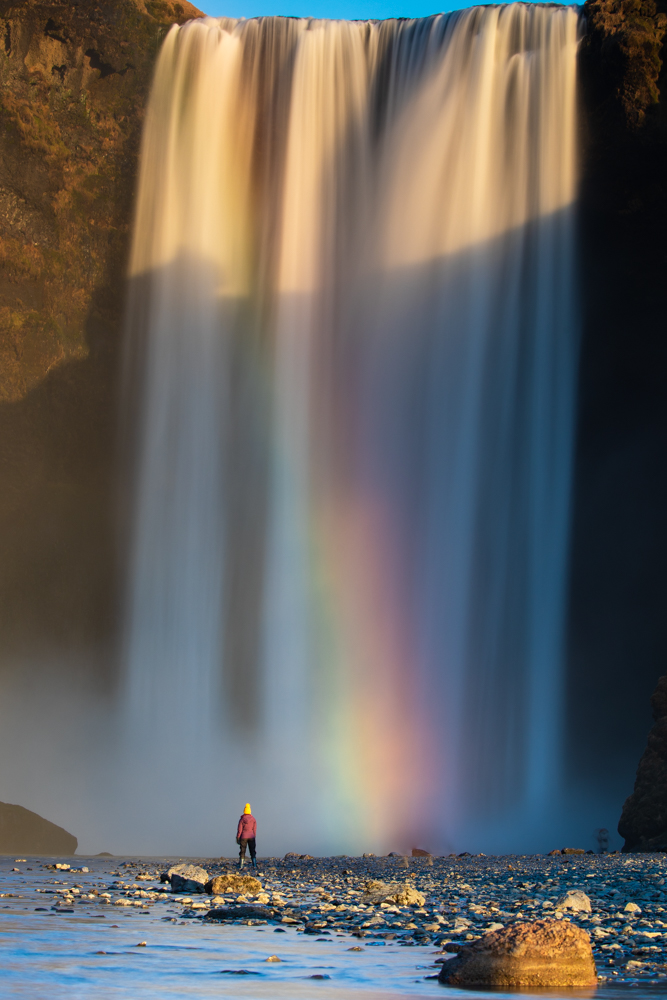
Gullfoss
This is the busiest waterfall in the south of Iceland. It’s on the golden circle route, so all the tours make a stop here.
It can make for a very pretty photo, though, if the light is good. Instead of heading down to the falls, follow the trail out to the left and shoot the falls down the valley.
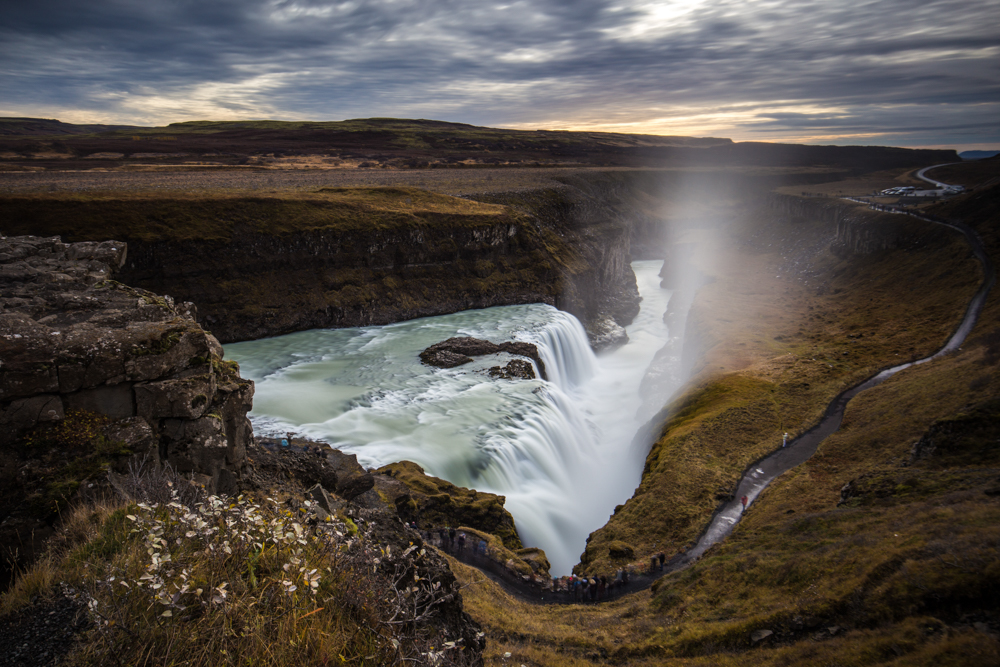
The West
Out west, especially southwest, is generally fairly safe in the winter. Personally, I’d focus my attention on the Snæfellsnes Peninsula. I haven’t been to the western fjords in the winter. But, I imagine they’re awesome if the weather is good.
Londrangar
This cliff and the sea stacks that sit below them are absolutely impressive. Watching the waves crash against the earth is just mind-blowing. It’s a short walk up here from a small parking lot, and there is a viewing platform. Please note that you should stay within the bounds of the platform – not only for safety, but to protect the delicate vegetation on the cliff.
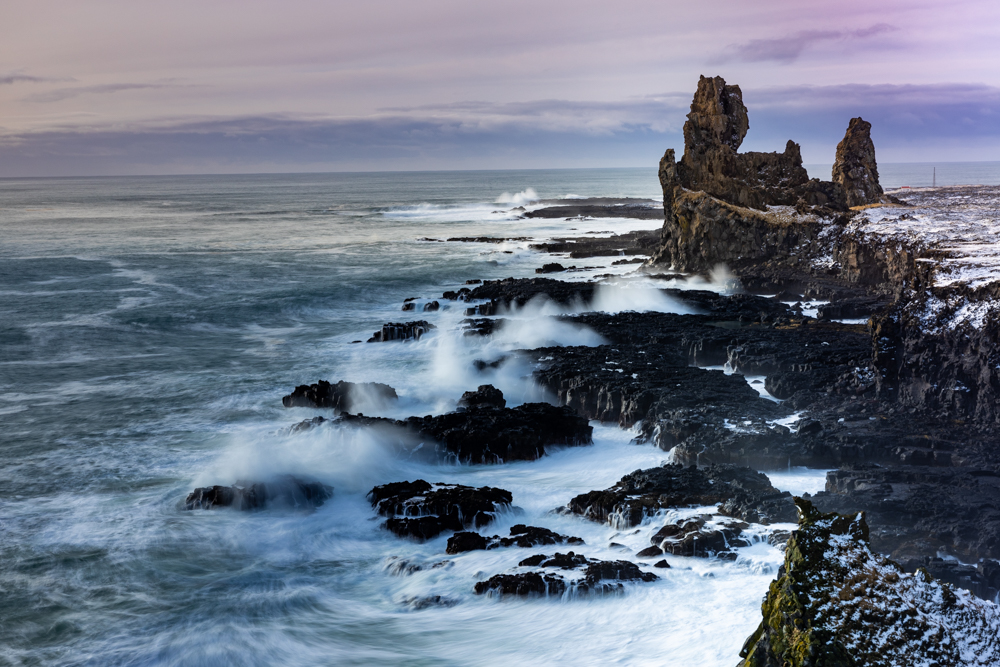
Gatklettur
This is a really underrated location at the start of the peninsula. The obvious photo here is the beautiful arch rock, and it doesn’t take much to find it as there’s a viewing platform. However, if you keep walking along the trail along the coast, you’ll find a number of other photos – including reflections back at the town.
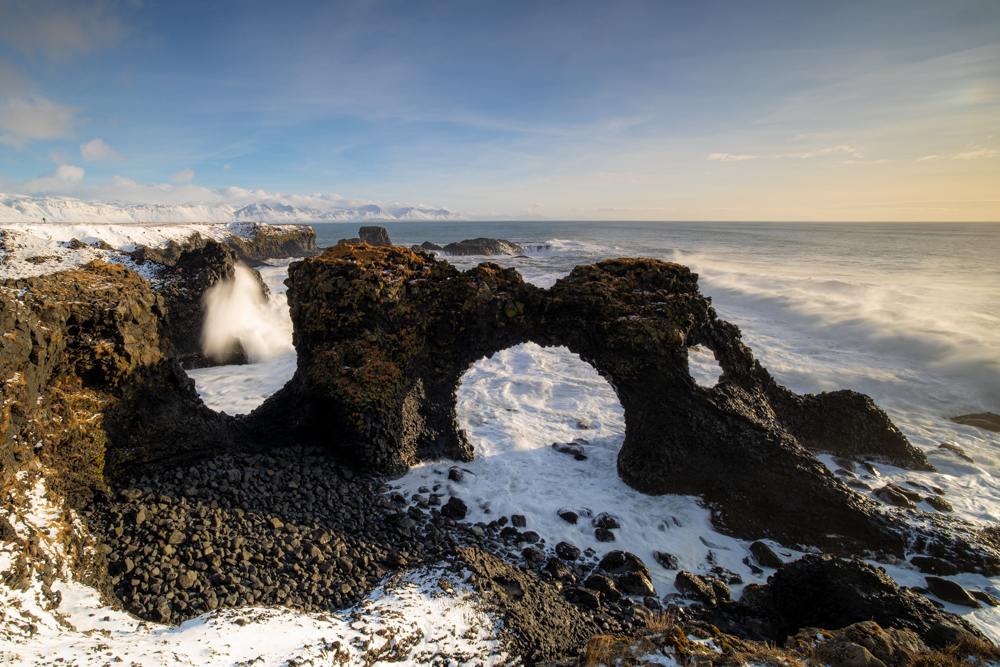
Kirkjufellsfoss
This has quickly become the most popular location in Iceland. And, while it used to be an absolute mess to visit sometimes (terrible parking spaces, and people all over the falls), some measures have definitely improved the experience. There’s a new parking lot, and there are barriers keeping people (supposedly) from getting too close to the falls. It’s still crowded, just less so than it used to be.
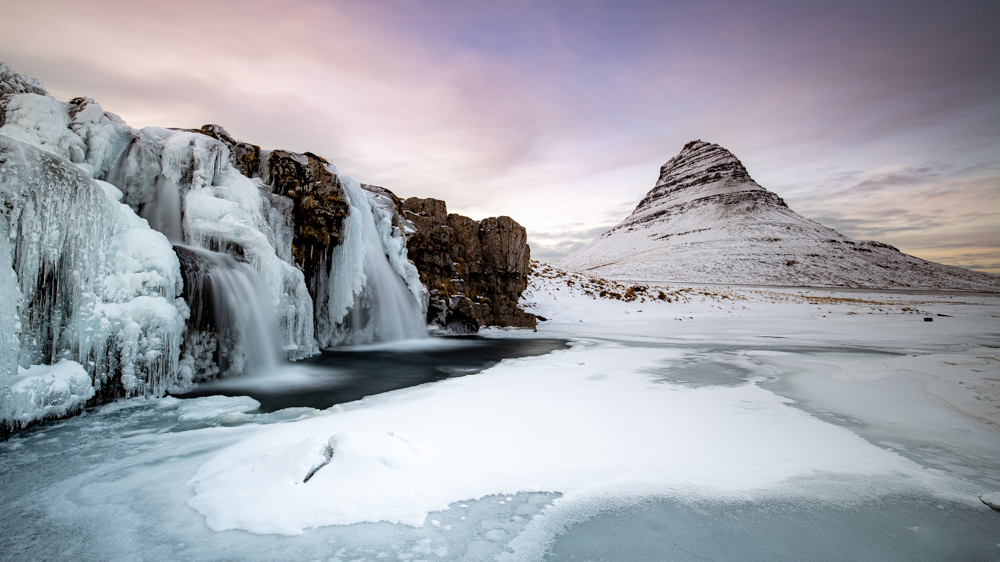
If the waterfalls are too busy, there are also a bunch of really beautiful photos to be made on the other side of the road where the tides come up and sometimes lead to fantastic reflections of the mountain.
The East
It’s a long drive to get out east. But, there’s at least 1 really special photo spot out there: the horns. But, aside from the obvious photo locations this is the best place in Iceland to see reindeer in the wild. In fact, there basically everywhere beyond the horns.
Hvalnes Lighthouse
This is the place to photograph the eastern horns. There’s a small parking lot out near the lighthouse. Don’t drive all the way to the lighthouse, stop at the parking lot in the middle. From there, you can follow the paths down to the little beaches and rocks. You get some really cool compositions from down there.
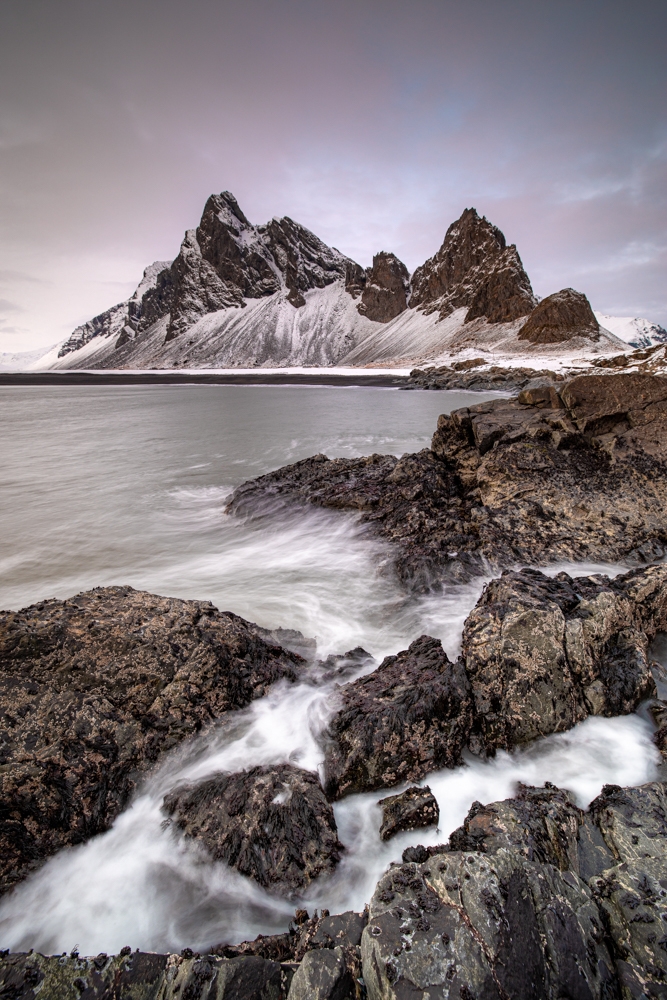
Vestrahorn
Vestrahorn (aka West Horn) is starting to be almost as popular with photographers as Kirkjufellsfoss and other locations in the south. Near Hofn, this locations is outer-worldly. There are heaps of compositions to be made here. The most popular location is up at the mounds of dirt. There are some really cool leading lines that direct the viewers eyes to the peaks.
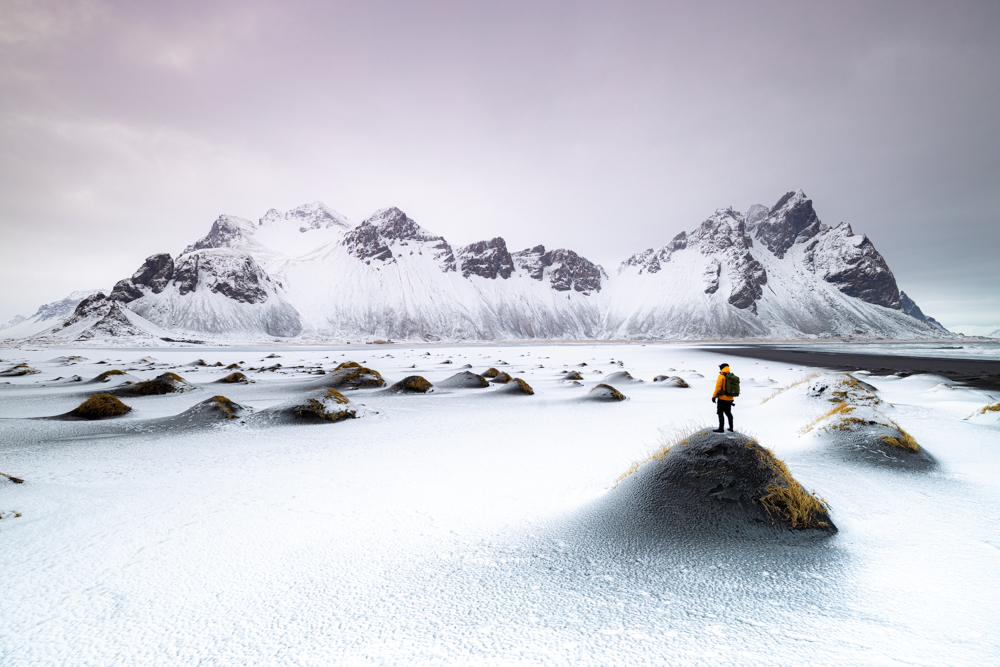
The other two spots are both for reflections. In the summer and early winter, photographers like to head away from the sea where there are some thin waters that create perfect reflections. Or, in the winter, you can wait for the seas to come up on the beach and find semi-reflections and retreating seas there. I’ve shot this location 4 times and come away with something different each time.
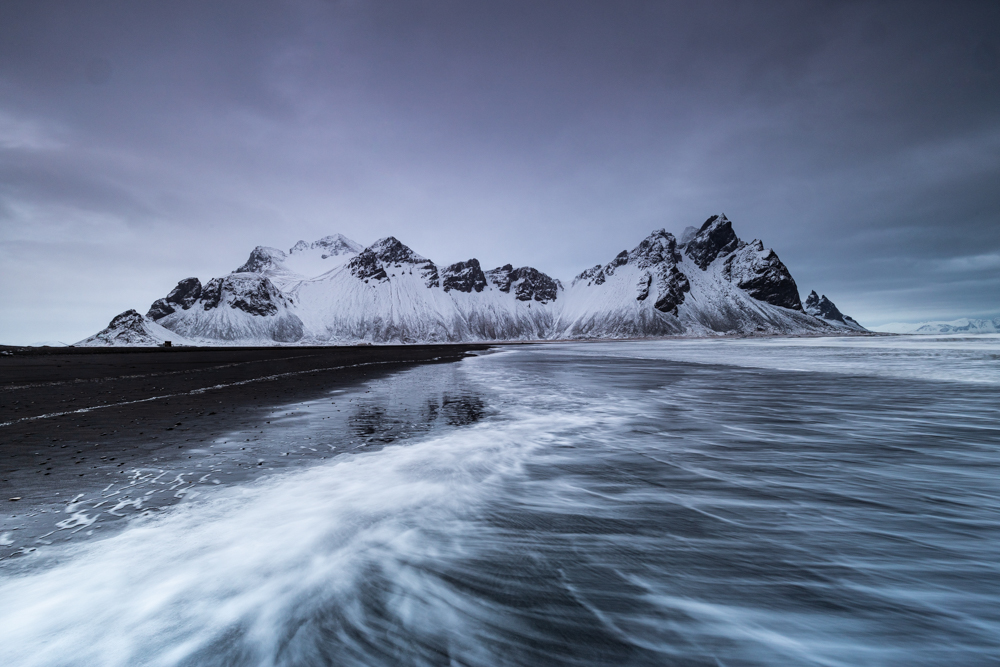
Rjúkandi Waterfall
There are actually a lot of waterfalls in the east of Iceland. However, I need to warn you that most of the waterfalls are frozen over in February and March if the temperatures have been cold. If it has been warm, it’s worth checking out these falls, which are fairly close to the ring road.
The North
Having driven the ring road twice – once in winter and once in the fall – I can tell you that it’s definitely better for photographers outside of winter.
Lots of the locations in the north are frozen, inaccessible, or covered in snow.
That being said, head to some of the fishing villages and they’ll give you a different photography subject in Iceland than just the landscape.
Hvítserkur
This sea stack arch is really cool. It can make for a nice minimalist long exposure image. And, in the summer you can sometimes walk right out to the arch.
However, in the winter, the trail to the bottom is usually shut. And, because on the hike to the viewing platform in winter as it becomes really icy.
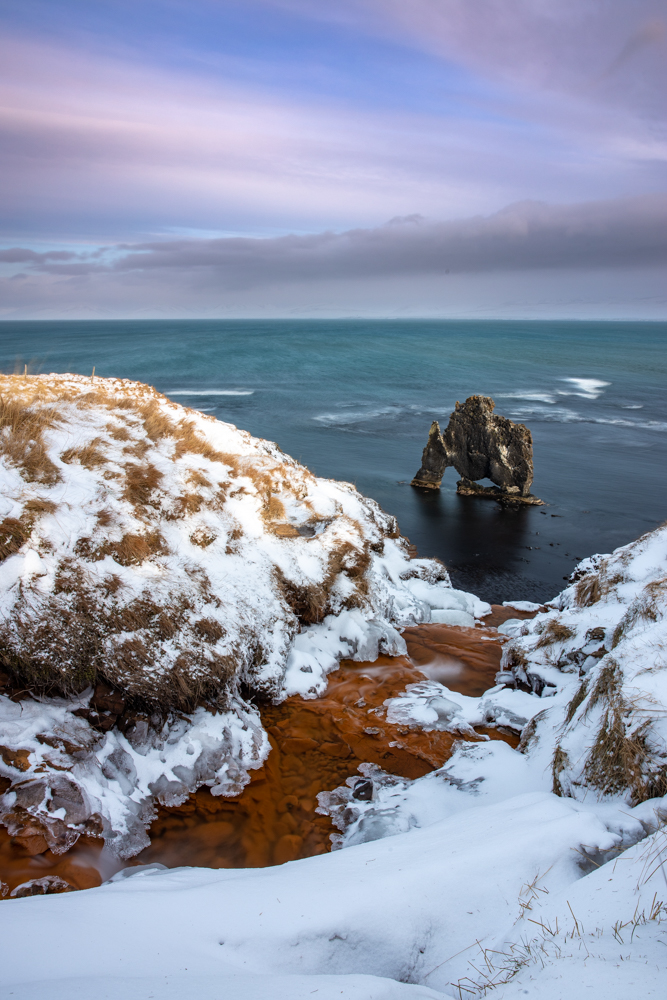
Goðafoss
This is one of the most beautiful locations in all of Iceland. In the winter, you’re more limited in how you can photograph it, though. There’s only one side of the falls you can photograph, and you can’t go down the trail to the bottom of the falls.
But, with the snow and ice on the falls, they look phenomenal.
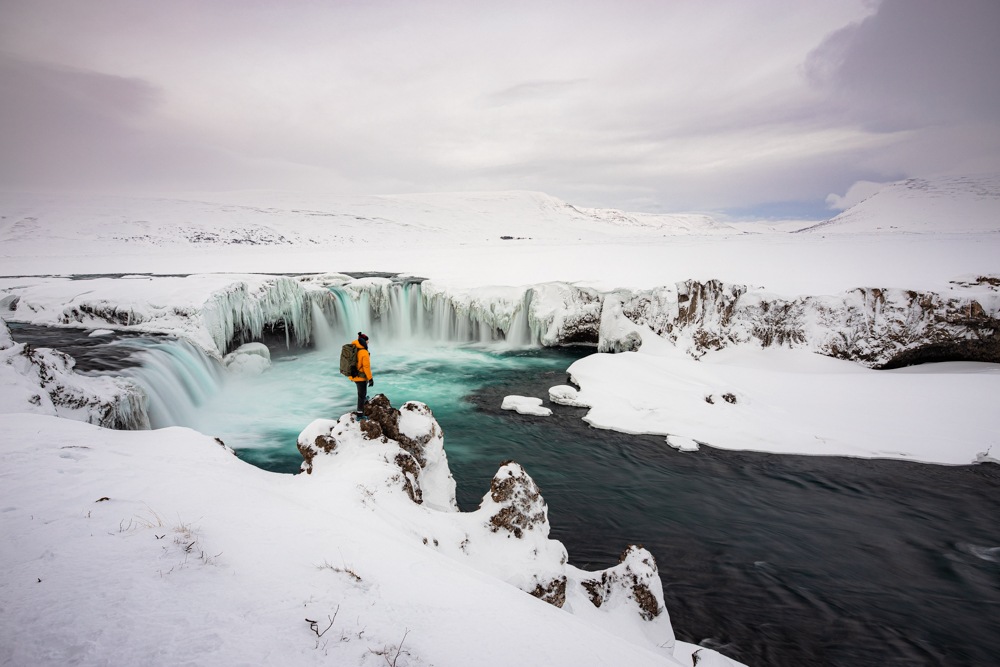
Siglufjörður
This fishing village is a bit of a gem in the winter, and the fjord to get here is just beautiful. It might not be classic Iceland imagery, but it is something a little different in a country where everyone takes very similar photos.
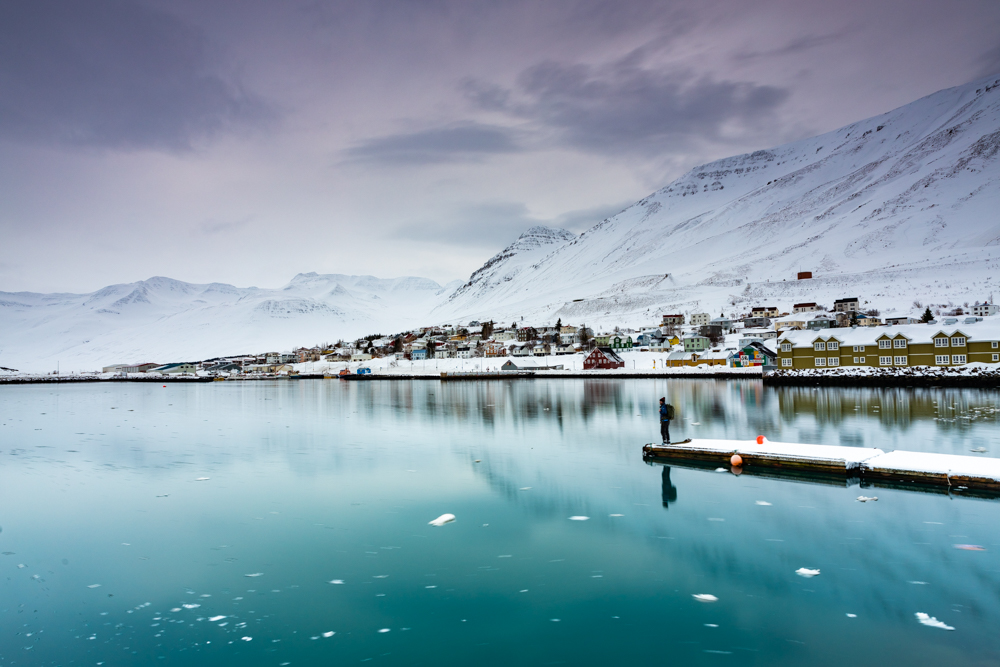
Húsavík
Sadly, we didn’t get to photograph this village. When we got here, the snow came in hard and we nearly didn’t escape before a blizzard blocked us in.
That being said, there are some photos here. It’s worth checking out.
Dettifoss
Dettifoss is maybe the scariest waterfall in Iceland. It’s intensely beautiful. But, honestly, it’s never a place you should pen into an itinerary. Even in good weather, the road here closes. In the winter, if the weather is even slightly bad you can only get here by special vehicle/tour.
On our latest trip, we couldn’t make it in. So here’s an image from the fall.
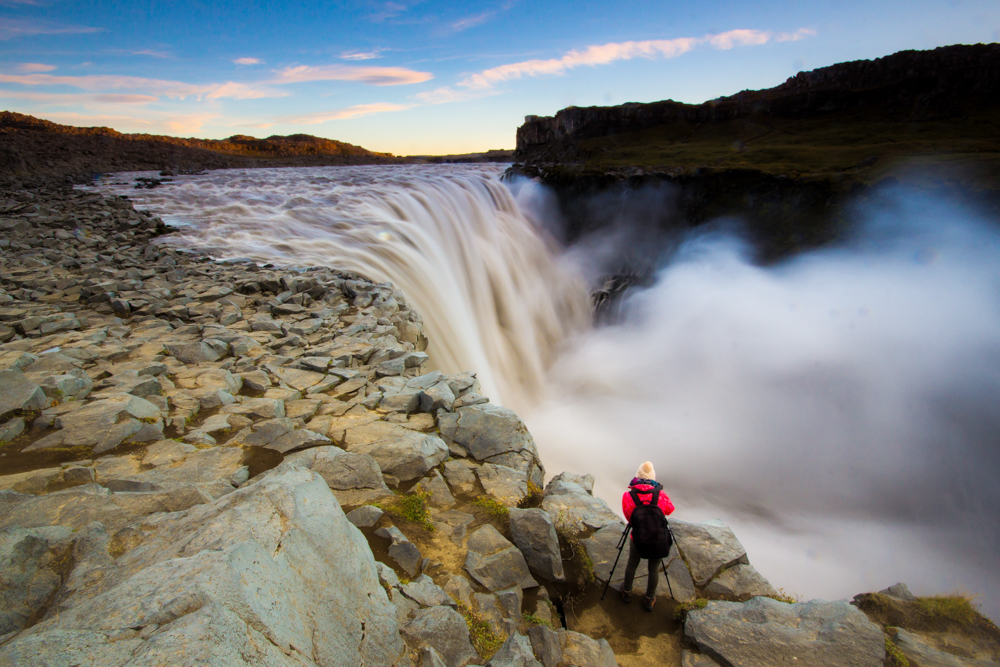
Camera Gear for Iceland Photography in Winter
I’m one of those photographers that believes less is more when it comes to camera gear, but then pack every lens I own when I go anywhere. But, the truth is that your camera gear for Iceland in the winter can be quite minimal. You don’t need 5 or 6 lenses. You can probably get away with 2.
But, what you do need is ways to keep your gear protected. Below is a packing list for Iceland photography – really in any season.
- Camera Bodies x 2
- I really think you need 2 camera bodies in Iceland. There’s a chance one body could have issues or get damaged in the weather conditions. Also, if you have 2 bodies you can keep one lens on each and not have to switch lenses so often.
- Lenses
- An Ultra-Wide Angle: 16-35mm or equivalent. Preferably an f/2.8 for astro and northern lights.
- A Telephoto Lens: 70-200mm or equivalent.
- A Standard Zoom: 24-70mm or equivalent. I once had a participant to one of my Iceland workshops only take a 24-70mm and they did just fine. I think if you brought these 3 lenses, you’d be covered.
- Filters
- 1 x 3-stop ND Filter
- 1 x 6-stop ND Filter
- 1 x circular polarizer
- Optional
- Any grad filters.
- Tripod
- Don’t cheap out on a tripod for Iceland. The wind gusts knock over even the highest quality travel tripods. If you bring something cheap, you’ll have a hard time getting any sort of long exposure photos that are sharp.
- Camera Bag
- Personally, I love my Shimoda Action X camera bag. It’s tough. And that’s the big thing. You need a camera bag that’s tough. Ideally, something waterproof.
- Accessories
- Shower Cap: To keep you camera and lens dry under rain and waterfalls.
- A Good Microfiber Towel: Not one of the cheap ones. Get one of the 3M ones people use for buffing cars.
- Memory Cards: Lots of memory cards.
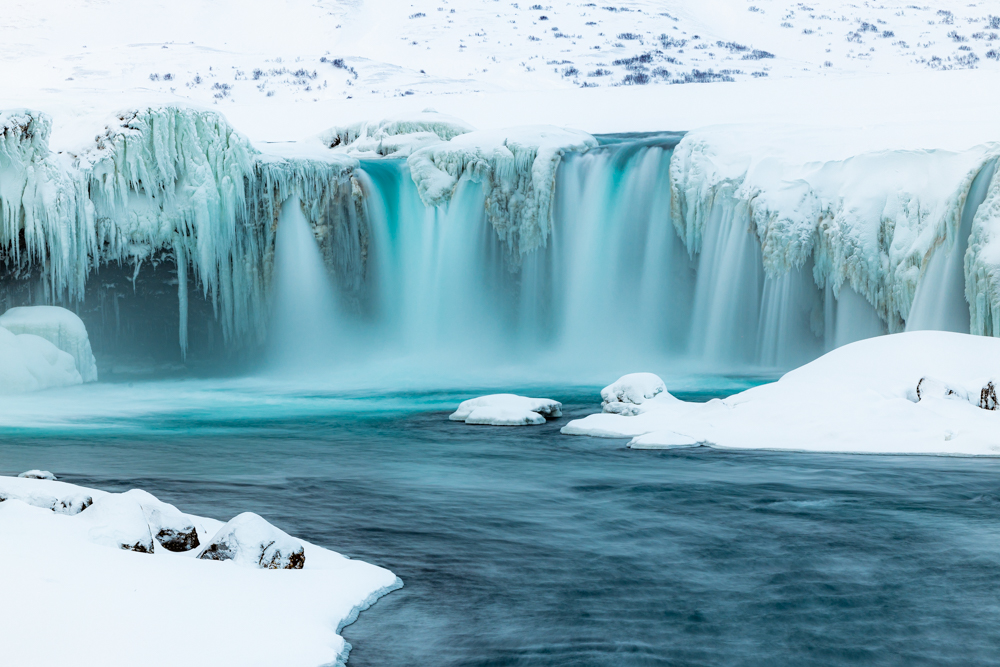
How to Find/Photograph the Northern Lights
Let me rip the band-aid off really quickly for you. Iceland is not the best place to see northern lights. It’s cloudy, windy, rainy, and the conditions rarely allow you to get a great viewing.
That being said, during the winter you’re almost guaranteed to see them at least once.
There are really 2 important websites to use. The first is called My Aurora Pro. This will app will tell you if there are Auroras forecast. In general, you need a KP3 rating before you get really good lights. This app will tell you the forecast. And, luckily, northern lights are fairly predictable. Generally, you can have a northern lights forecast 10-14 days in advance. So, if you have the time and live within hopping distance of Iceland, you can actually try to wait for the right conditions before leaving.
The second thing you need is to look at the cloud cover maps. I find that the best place for that is the Icelandic meteorology website Vedur. There’s an English version if you go to en.vedur.is.
So, to see the northern lights you need a couple things to come together. First, you need KP3 or higher. Then, you need to find a clear bit of sky.
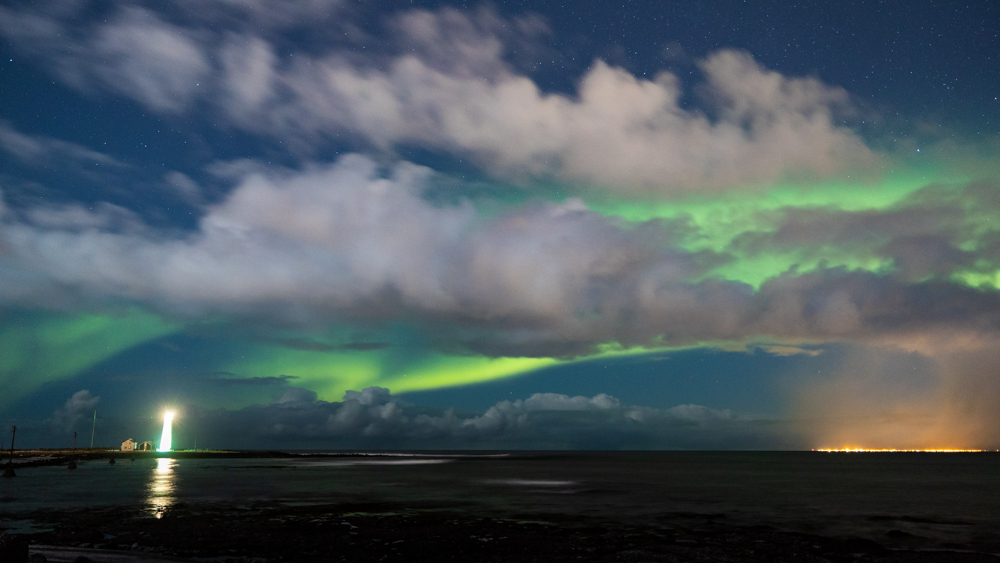
Best Places for Northern Lights Photos?
Personally, I have some favourite locations for northern lights photos in Iceland. Depending on where you are, all of these can be spectacular.
- Grotta Lighthouse near Reykjavik: Lots of light pollution, but an easy drive from town.
- Kirkjufell or Kirjufellsfoss: You look straight north here. If good, you get great banding over the mountain.
- Skogafoss: Looks north as well, but you need to get lucky in where the lights go off.
- Vestrahorn Mountain: Right north, and with some luck you can get reflections. But, please note that the parking area is closed at night. You need to get special permission from the cafe in the day before going.
- Diamond Beach: Doesn’t look north, but if the lights really go off, it doesn’t matter.
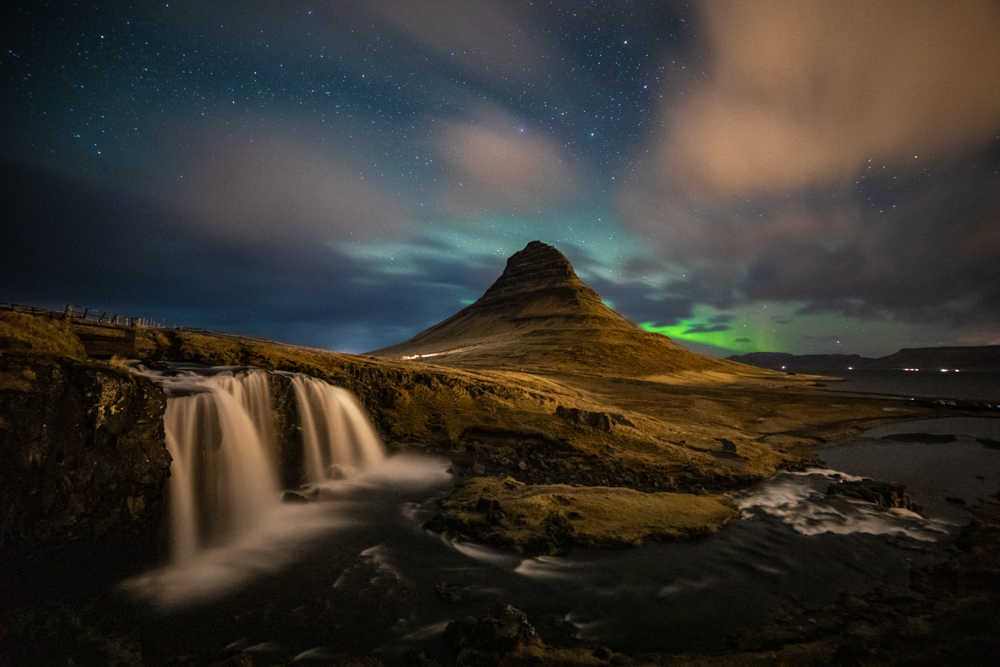
Winter Clothes to Pack
I tell all my tour groups this: Iceland isn’t about the cold, it’s about the wind and wet. So, all the clothing you bring to Iceland needs to keep the wind and and water off of you first. It’s actually all about layering. If you can find thin weather-proof top layers, then you can wear thicker things underneath if you need them.
My Iceland packing list looks something like this:
- 1 x wind/rain proof jacket shell.
- 1 x down jacket (preferably waterproof)
- 1 x fleece jacket
- 1 x sweater
- t-shirts
- 1 x water/wind proof pants
- 1 x cotton sweat pants (for under the wind proofs)
- 1 x jeans – for night time
- 3/4 x wool socks
- underwear
- possibly thermal underwear (long underwear)
- 1 pair waterproof hiking shoes
- 1 paid of rubber boots (if you plan on going in water)
- 1 x crampons – for walking on ice.
- 1 x toque (winter hat) – preferably wool.
- 1 x winter gloves – or photography gloves like the ones in my camera gear list.
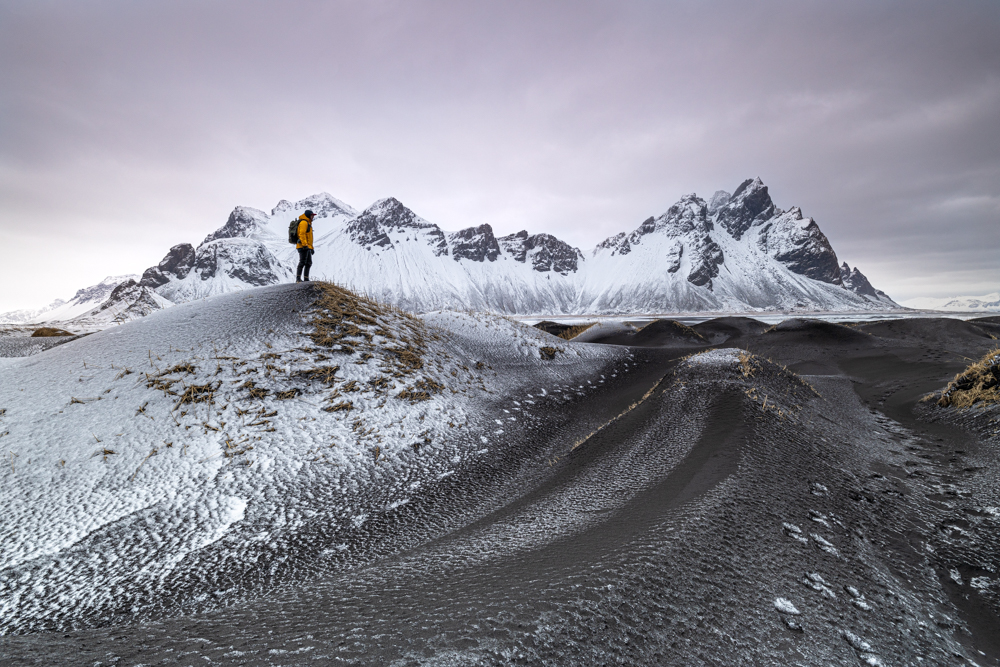
What Car to Rent in Iceland During the Winter?
It really depends on where you’re going. But, I think that at the very least you’ll want to get a small SUV like the Dacia Duster or Jeep Renegade. You don’t really need the 4×4, but it can come in handy in some of the snowier locations.
Don’t Ask Questions, Get the Insurance
Let me be clear on something: get the insurance. The rental car companies in Iceland are famous for giving people a hard time on damages, even if they’re covered by basic insurance. A bunch of things aren’t covered under normal coverage in Iceland. Things like wind damage, sand damage, and other things that do happen here aren’t covered. So, be sure to ask for the one that covers everything.
Believe me, things happen in Iceland that are out of your control. In fact, I’ve never had a vehicle in Iceland that didn’t suffer some sort of damage, and never once was it me – it was always the wind or sand.
If you’re looking to rent a car in Iceland, the best prices on rentals usually come from here.
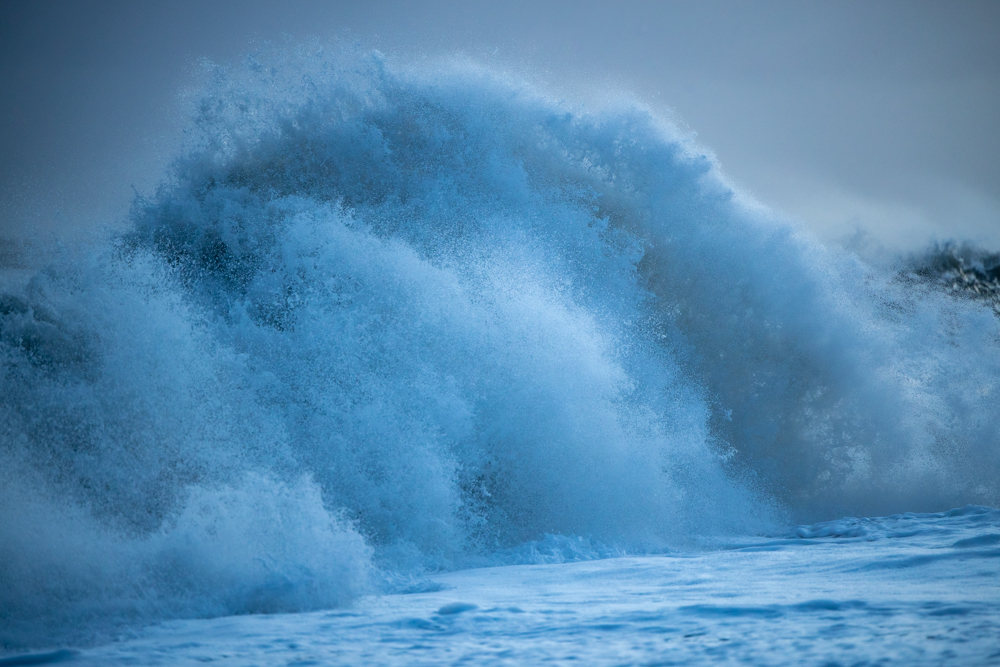
Links for Safe Travel in Iceland
There are 2 websites that you should definitely stay up on when traveling Iceland in the winter – or summer for that matter. The first is en.Vedur.is. There you’ll find all the weather maps and predictions. They are very good and as accurate as you can be somewhere like Iceland.
The other site I like to use is Safe.is. This site takes the official government road maps and updates them regularly so you can see which roads are open, and which might be too dangerous to pass.
When in Iceland, I’m looking at both of these sites religiously; not only for safety, but for photography purposes.
Where to Stay
I don’t really know why, but you rarely get the best price in Iceland directly through the hotels. Instead, the best place to find the cheapest hotel prices is at booking.com. Booking has the best coverage in the country and nearly every hotel, hostel, and guest house is listed.
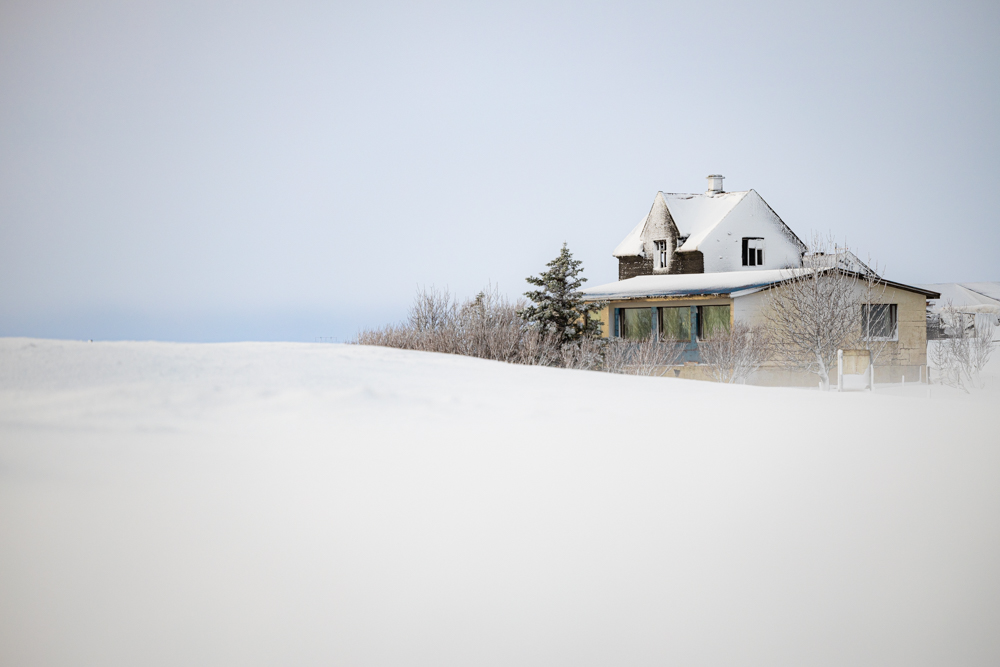
Can You Camp in Winter?
No.
I mean, I suppose legally you can.
But, January through March the camping conditions would definitely be rough. There are rules stating that you can camp on any public lands. But, most of them would be pretty wild. You’d definitely need to be well versed in winter camping. It’s not for amateurs.
What About a Camper Van?
Yes, absolutely. In fact, about a half of the vehicles you see on the road in the winter are campers. There are a bunch of camper van companies in Iceland. Personally, I’d recommend Happy Campers.
Want to Join a Photography Tour to Iceland?
Though our 2020 Iceland photography tour is already in the books, we’ll be opening up our 2022 winter trip fairly soon. So, if you’d like to join our trip then – or to one of our other destinations such as Tasmania, South Africa, or Cinque Terre – be sure to sign up to the newsletter below.
